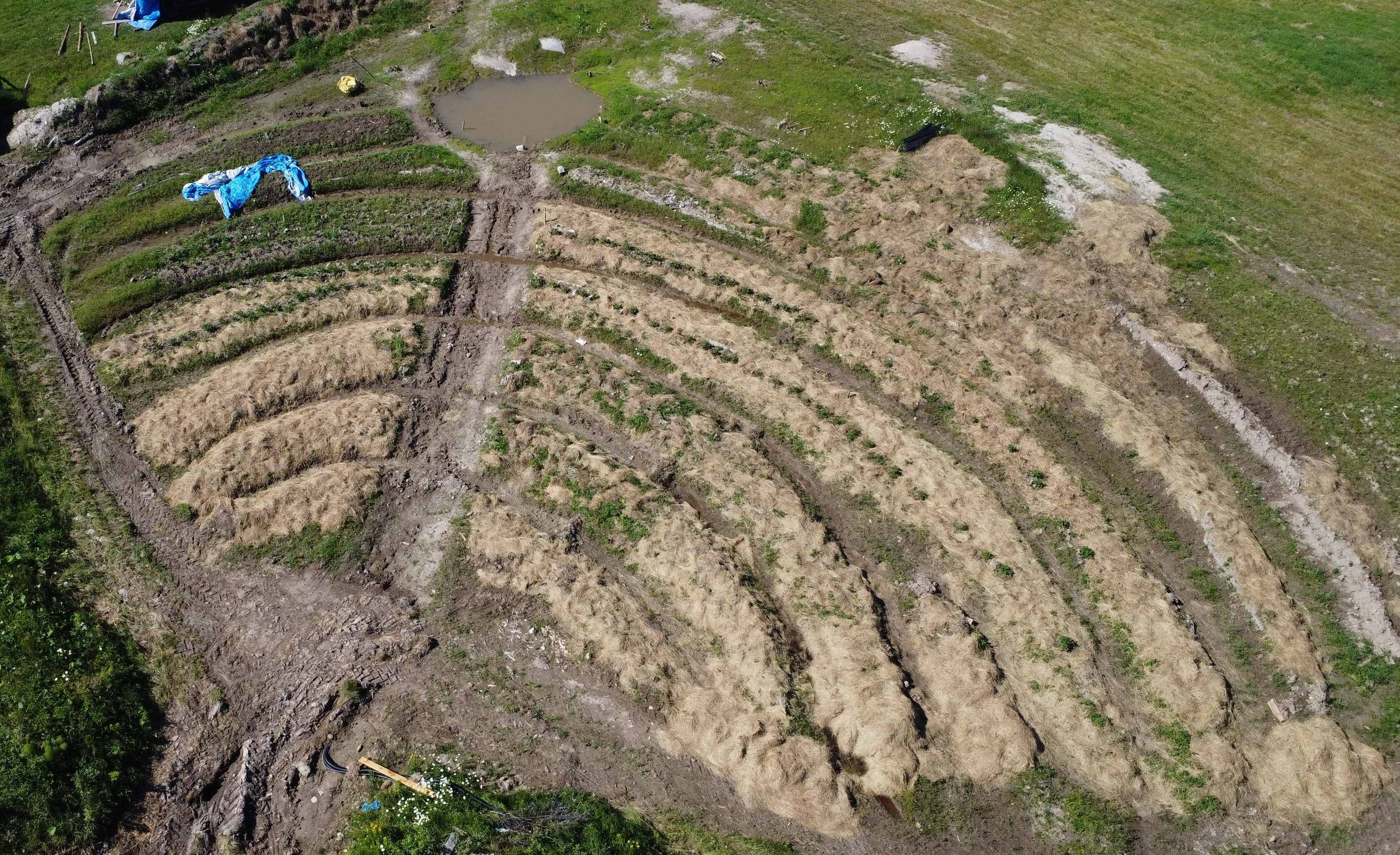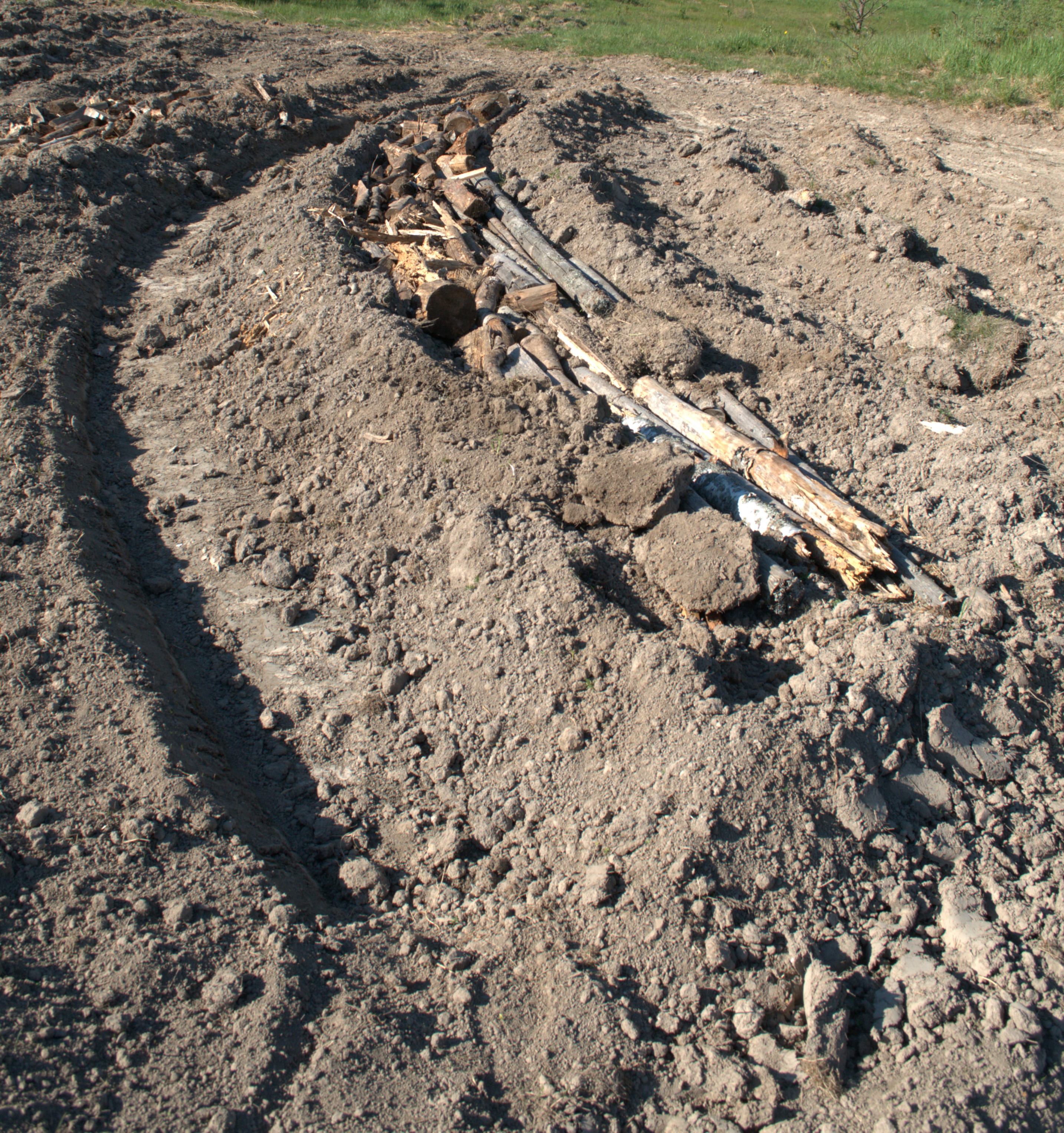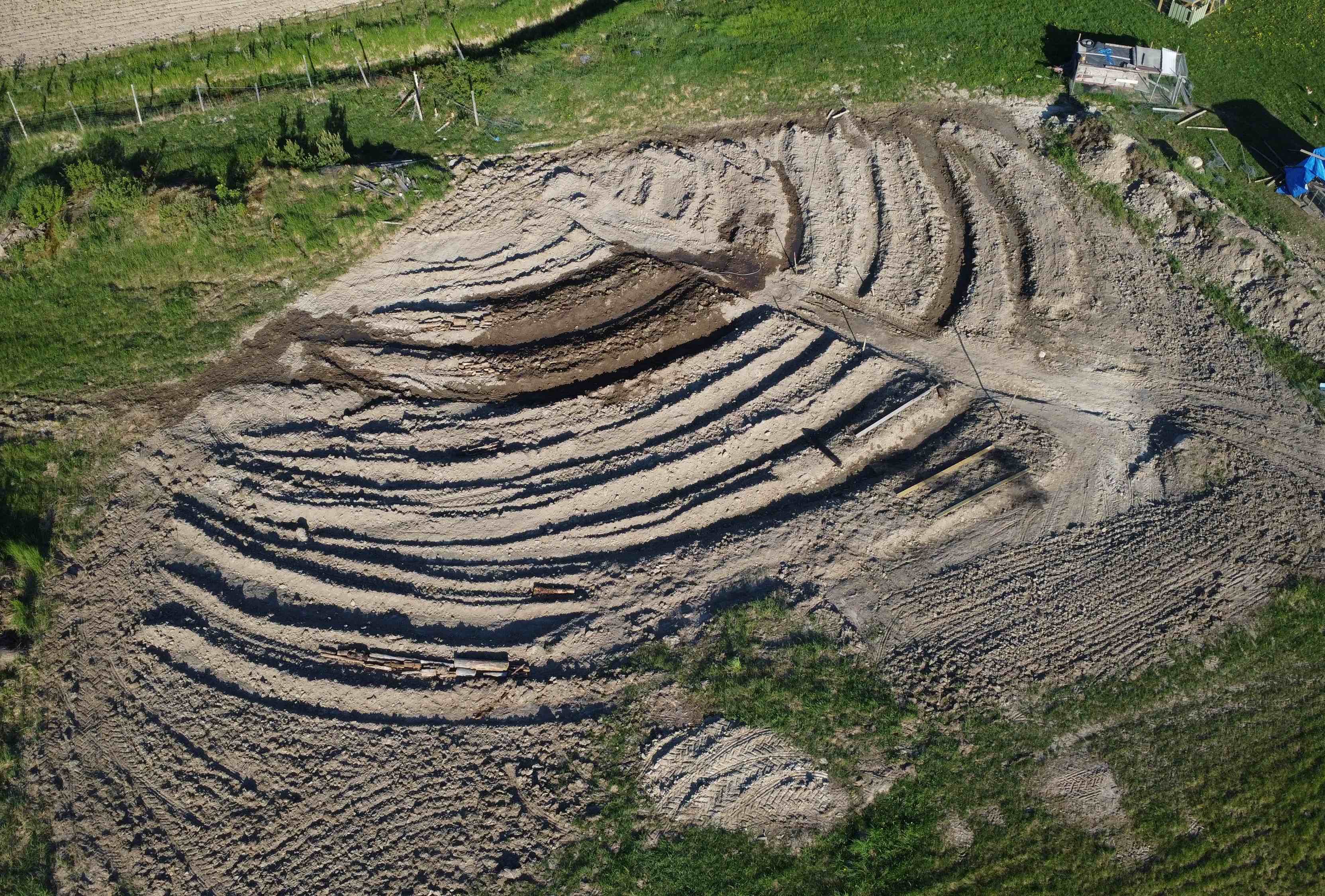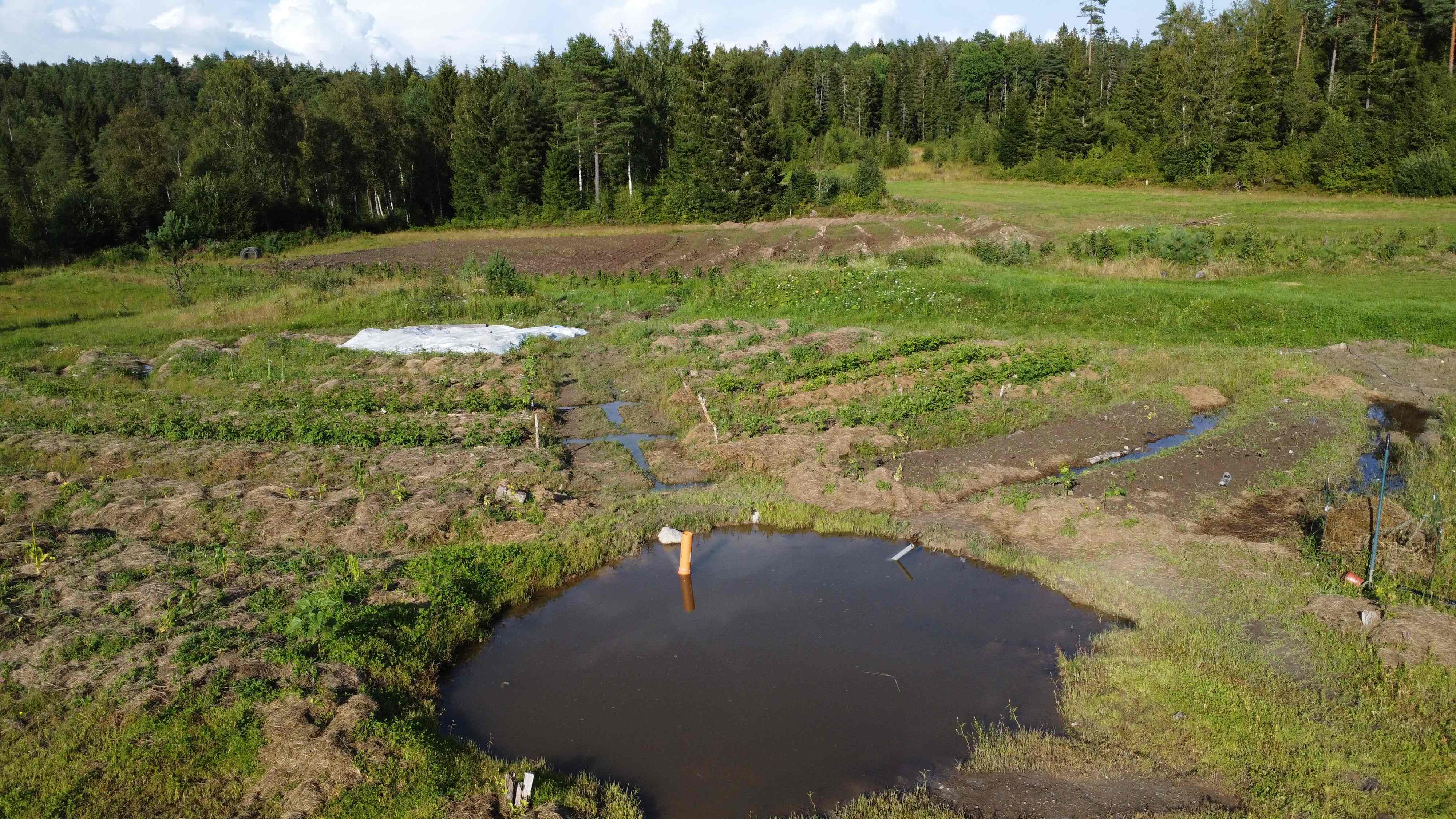Ditches, ponds and wood in raised beds.

Understanding watercourses is essential for a permaculture design. It seems that we are moving towards a more unstable climate with unpredictable seasons. Muskedalen is located at 59.5 degrees north and at an altitude of 140 meters. For many crops, the season is at its shortest.
The combination of livestock and cultivation is a recommended combination for the Nordic climate. Facilities for animal husbandry are costly, and it's labor-intensive. There is mostly grain production in the district here, and manure is a sought-after commodity among farmers. Green manure with self-produced grass is a good alternative.
To copy nature, the 4-element design system is used to balance the needs of the plants. Nature is varied, and flat lands are actually not that suitable for growing vegetables. Slopes and mountain sides are at least as exciting, but all have their own watercourses. Water is one of the 4 elements, and watercourses are an important part of the design. In cultivation design, watercourses are recreated.
Low temperatures are a challenge with the Nordic climate. Temperature is linked to the element fire. The sun is our largest heat source, the fusion processes in the earth's interior are the second heat source, the combustion of wood and fossil fuels is the third heat source. Fire exists in all life, including in plants. “Keep the fire alive,” said my shaman teacher Ailo Gaup. Humans also have an inner fire that keeps us alive, more about that in the chapter on culture.
To create growing conditions, all means and techniques must be utilized, except for externally supplied, electrical and fossil energy. The first permaculture principle is to observe. Observing what happens in terms of temperature in the area to be cultivated will give an indication of what measures are necessary for the plants in question.
Good local temperature conditions must be created with a system of techniques. Natural phenomena that raise the temperature locally must be utilized. A south-facing slope is naturally warmer than a flat field. Good sun conditions come at the expense of unfavorable wind conditions.
Beneath the soil layer lies a clay layer, and that clay layer affects the soil layer above. The clay should not dry out and become hard, but it should not become too soft either. A moist clay layer will help the soil above retain moisture, reducing the need for watering.
In nature, dead trees and plants fall to the ground, where they are composted. Carbon cultivation is also part of nature's systemic design, whether the soil is covered with wood chips, or the beds are built as hugel beds. The raised beds are built from thinning wood from the forest that has been lying around for a while.

Wood was laid down, and soil was shoveled over, partly with a tractor and then with a shovel.
 By no dig does not mean never dig. The ditches are located down on the clay layer, and the upper part of the pond is located on rock. The Hugel culture on the right in the picture was replenished with soil that was excavated from the pond.
By no dig does not mean never dig. The ditches are located down on the clay layer, and the upper part of the pond is located on rock. The Hugel culture on the right in the picture was replenished with soil that was excavated from the pond.
Watering from below is most effective against evaporation. A water system around the vegetable beds will keep both the clay layer below the beds moist. Rainwater from the yard, the patio and water that collects in front of the hugel culture is directed to the small pond. From the small pond at the top of the garden, water is channeled into channels around the vegetable beds. The water that remains in the channels will penetrate the wood, which retains moisture. A pipe bend acts as a valve, allowing the water supply to be regulated. The orange pipe bend allows the pond to be emptied during rainy periods, and the raised beds will stay relatively dry. Small apple trees have been planted around the pond to create a root system, and pine trees have been planted further down in the fields. The evergreen trees will create a root system and help retain heat.
 When the bend of the grey pipe is placed in the water, the water goes through the grey pipe into the canals. The orange bend faces upwards and the water remains in the pond. When the orange bend is placed in the water, the water will pass through the bypass and out into the gutter.
When the bend of the grey pipe is placed in the water, the water goes through the grey pipe into the canals. The orange bend faces upwards and the water remains in the pond. When the orange bend is placed in the water, the water will pass through the bypass and out into the gutter.
Experiences with the design so far:
The design was established early in the season -24, and a summary was made at the end of the season -24. At the end of the season -24 there was a lot of rain, and the area was wet. Where the potatoes were, it was relatively dry but wet further down. The potatoes did well. The strawberry plants that I have had for several years that had been struggling finally seemed to thrive. Carrots, beetroot and salad had a hard time, the reason may be a cold period early in the season. It seems that insects are also a challenge here, which requires a new planting strategy, and possibly insects screen.
As autumn progresses, I see that there are clear temperature differences in the area. The bed on the north side of the pond is warm (opposite side of the grey tube), while the cold settles down in the pond and forms ice.
